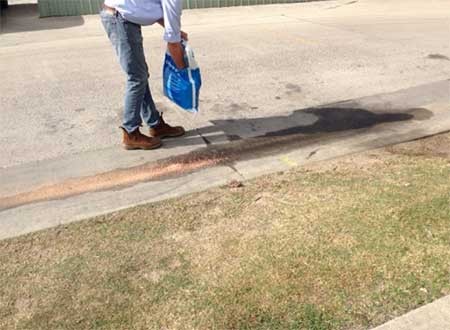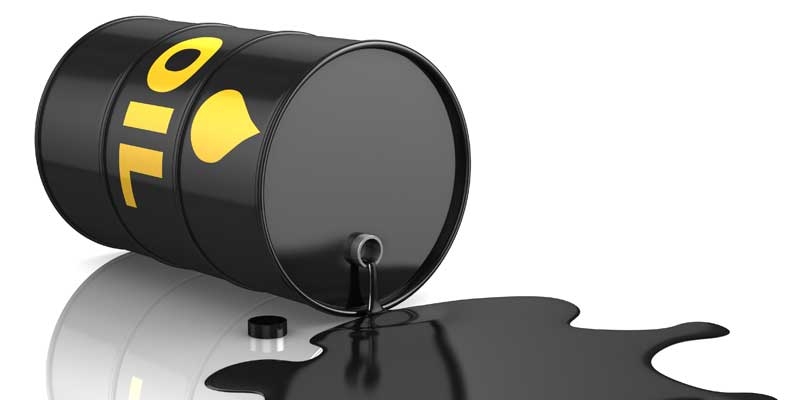Hydrocarbons are an essential part of our everyday functioning – fuels, crude oil, machine oils, and other oily substances keep our machines running and businesses operating.
Unfortunately, oils have a detrimental effect on our environment if they are allowed to leach into it. That commonly happens during accidental spills.
Not only the major oil industry spill accidents count as “spills”. Any oil leakage counts. This is due to the unique properties of hydrocarbons and their behavior in the environment.
How Oil Spills Affect The Environment?
Aquatic environments are particularly susceptible to oil pollution. Because oil and water do not mix, oil is able to spread far and wide on the surface of the water, creating an oil stain known as an oil slick. The slick blocks sunlight and sticks on any animal that comes into contact with it.
As the pollution continues to spread, the water breaks down the slick, and the oil steadily enters the water column. The exact life cycle will depend on the pollutant. Some hydrocarbons evaporate slightly, some will break down quicker than others, and some are more likely to be eaten by specific microbes. However, in any case, a certain amount will remain. It will sink to the bottom, where it will continue to affect all living communities.
How Oil Spills Affect Marine Life?
In a nation surrounded by seas – such as Australia – knowing what hydrocarbon pollution does to marine life is essential.
Crude oil affects marine life both directly on contact and indirectly through persisting in the environment.
Hatchling sea turtles become fatally trapped in the oil. Cetaceans inhale it, which affects their lungs and their metabolism. Oil impedes the insulating and water-repelling properties of furry mammals’ coats and birds’ feathers, respectively; without natural protection from the elements, both mammals and birds die of hypothermia.
The oil that persists in the environment penetrates into the water column, and the exposure of marine organisms such as corals, shellfish, and fish continues for prolonged periods. In fish, that results in stunted growth, fin erosion, liver and heart defects, and poor reproduction rates.
The most substantial damage to the environment comes from large spill accidents. However, hydrocarbon runoff from many small sources also has an adverse effect on the aquatic ecosystems due to oil being a cumulative persistent pollutant in this type of environment.
That is the reason spill accidents became a subject of environmental regulations in all developed and most developing economies. To be compliant, business owners and managers must prevent hydrocarbons from reaching sewers, storm drains, and aquatic ecosystems and must not leave the spill unattended in any environment. Accidents are dealt with immediately on the site by using a proper set of tools.
How Are Oil Spills Cleaned Up?

As said priorly, oil is water-insoluble. If you try to wash the oil off a surface, the water will only carry it and spread it around – the volume of oil in your environment would not decrease, and it would penetrate deeper into ecosystems.
In your kitchen, you would try to clean up the vegetable oil spill with a dry towel rather than by adding water to it. The same applies to industrial oil spills, only on a larger scale. Containment and absorption of the spill are key to successful damage control. Also, some microorganisms can be harnessed to biodegrade at least a part of the hydrocarbon pollution.
There are many absorbents intended for oil spill containment and clean-up. One such patent is known as Oil Absorbent Sweep, or simply, Floor Sweep.
What Are Oil Absorbent Sweeps?
On hard surfaces, oil spreads with ease, and not being able to react straight away significantly increases your subsequent clean-up efforts and expenses.
If the spill happens on the ground, the soil will soak it in, causing long-lasting damage to the vegetation, microorganisms, and soil quality in the immediate area. Also, oil can slowly leach into groundwater, carried by surface runoff.
If you operate a business that comes with a spill risk (and most businesses with any type of vehicles or machinery do), you want to have an easy-to-use, practical and affordable floor sweep at hand at all times.
How Do Floor Sweeps Work?
Floor sweeps soak up the hydrocarbons and prevent them from spreading by encapsulating them within their absorbent structures.
The fact that they come in the form of powder or fine granules means floor sweeps are easier to use and create less waste than any mat-like absorbent, especially when it comes to broader spills or spills on uneven terrain.
In the case of an oil spill on a hard surface, here is an overview of the basic steps of floor sweep cleanup:
- Get the floor sweep bag and carefully open it: the bag should be easily accessible to workers so they can react quickly and efficiently.
- Dust the floor sweep over the spill area generously.
- Work it (mix it) with a hand tool – a rake or a broom will do – to increase and enhance contact between the material and the hydrocarbon.
- Continue to mix it until all the oil is absorbed and captured within the sweep material’s structure. When all the oil is absorbed, the mixture will appear dry. If it still looks wet, it means that the spill hasn’t been absorbed fully, and you should add more to get the desired effect.
- When the hydrocarbon pollution has been fully absorbed, you can sweep up and remove the absorbent.
- Disposal (or the need for disposal) depends on the type of spill, type of absorbent, and local environmental regulations.
However, you should know that not all floor sweeps are made equal. TradeEnviro offers a wide range of absorbents and floor sweeps for different purposes, and here is one product that stands out.
What is SpillSmart Floor Sweep?

SpillSmart Floor Sweep is a biologically active floor sweep that contains hydrocarbon-degrading microorganisms. Besides simply soaking up and capturing hydrocarbons, the microbes actively degrade oil and fuels.
That means that for a spill that happened on the ground, you can just leave the SpillSmart Floor Sweep, add some water for moisture, and leave it there to do its job. In time, it will fully degrade the oil. That makes SpillSmart Floor Sweep a perfect solution for spills in environmentally sensitive areas such as bushlands and grassy habitats and surfaces. Still, it can also serve equally well for spills on hard, artificial surfaces.
SpillSmart Floor Sweep is made from highly absorbent organic materials – natural cellulose. It can absorb the following substances:
- Oil
- Petroleum
- Fuels
- Solvents
- Cooking oils
- Protein fluids
- Sewage
The only limitation is that it should not be used to clean up very acidic and alkaline solutions.
Besides SpillSmart, TradeEnviro offers a wide range of floor sweeps – from Standard to Premium, from all-purpose to specialized. Our range of floor sweep products can cover practically all applications.
All Floor Sweep products are proudly made in Australia.
Floor Sweeps are available in 5 and 10-kilo bags – by a single bag or by pallet. You can count on a swift shipment too – with TradeEnviro, fast delivery and high-quality service are understood.
If you have any lingering questions, feel free to call us for a free consultation.


